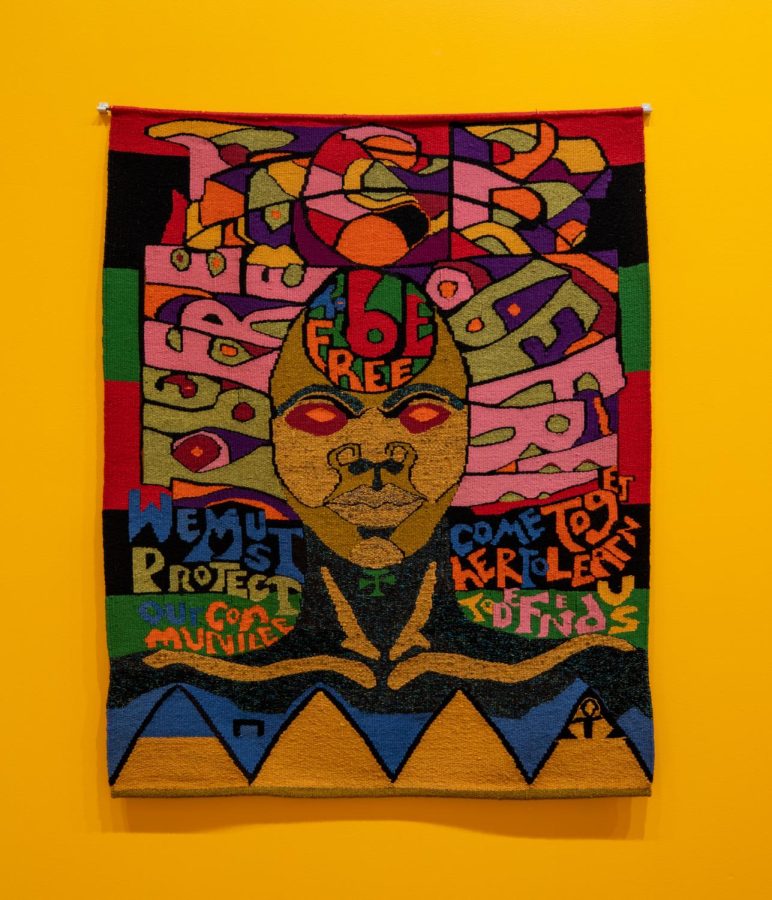Napoleon Jones-Henderson Honors Black History in Art
Contemporary art provides opportunities to reflect on the complex issues that shape our world and society. Many contemporary artists also tend to explore their cultural and personal identity through their works, and Roxbury’s Napoleon Jones-Henderson is no exception.
On February 17, Boston’s Institute of Contemporary Art (ICA) unveiled Jones-Henderson’s latest exhibit, Napoleon Jones-Henderson: I Am As I Am — A Man. The ICA allows the public to appreciate contemporary art through such exhibitions and gain insight into the artist’s creative process. On display until July 24, Jones-Henderson’s exhibition showcases the vibrancy of Black culture by embracing themes of Pan-Africanism and racial justice.
Jones-Henderson’s experience in the arts is truly global. After attending the Sorbonne Student Continuum Student and Artists Center in Paris, Jones-Henderson continued to develop his artistic abilities at universities in Chicago and Maryland. His creative education, however, could not be contained by classroom walls. As he continued to pursue traditional instruction, he also immersed himself in the Chicago Black Arts Movement of the 1960s and ‘70s. During this period of artistic and literary innovation, Jones-Henderson and other artists sought to bring change through visual arts and affirm the philosophy of the Civil Rights and Black Power Movement.
To this day, Jones-Henderson is a member of the Chicago-based artists’ collective, African Commune of Bad Relevant Artists. The group was founded in 1968 and has since used their art to unify the Black community and garner awareness for serious issues. Jones-Henderson himself has contributed numerous woven tapestries to the organization’s collection, some of which are now on display in his new exhibition.
The walls of the I Am As I Am — A Man exhibit are adorned in maps, tapestries and mosaics. Various sculptures sit atop pedestals throughout its multicolored rooms. Jones-Henderson’s work spans many different mediums and materials, but the intent behind each piece is the same: to elevate the Black experience as told through his own unique voice. Words are an important component in his artworks and can be seen scattered throughout many of his pieces. Each piece tells a story through different textures and shapes, including a layered sculpture dedicated to esteemed activist and writer James Baldwin. This piece is one installment in a series called Requiem for Our Ancestors, which seeks to highlight the revolutionary achievements of African American historical figures.
The movements and organizations Jones-Henderson took part in recognized the lack of positive portrayals of Black people in arts and media, and he has dedicated his career to filling this void. In order to achieve this, he sought to use bright and vibrant “Kool-Aid” colors to depict Black people experiencing and creating joy in all its dimensions. Such colors, Jones-Henderson claims, help “people move themselves to a better place.”
Boston Latin School student Ada Wu (II) comments, “Jones-Henderson has a powerful message, and he reflects that perfectly through his vibrant soulful artwork. He is an extremely inspirational figure — I am in awe of his art.”
Jones-Henderson has been transporting his viewers in this way for years, creating pieces that amplify and celebrate Black culture. In a featurette for the ICA website, he reflects on the decades-long career that led him to open his first exhibit at the museum, commenting, “I get up everyday in the pursuit of making another contribution of a positive image that elevates and affirms the humanity of African people and, by extension, the humanity of all people.”








Corey • Mar 21, 2022 at 2:40 pm
It is super interesting to learn about how an artist’s history and background are super relevant in their work. Not only did Jones-Henderson’s identity play a large part in this exhibit, but also his education endeavors and experience in many social movements clearly were very important in this work. Also, Jones-Henderson’s involvement in the Chicago-based artists’ collective seems to also play a role in this work as the work gives a voice to all unique perspectives, which is really interesting.
I think it is super important that more contemporary works similar to this exhibit be created and displayed. I believe a key aspect of contemporary art is the inclusivity of all identities. Jones-Henderson practices this, as mentioned, by creating more portrayals of Black people in arts and media. Jones-Henderson’s work is a great example of inclusivity and identity in contemporary art that will hopefully grow even more in the future.